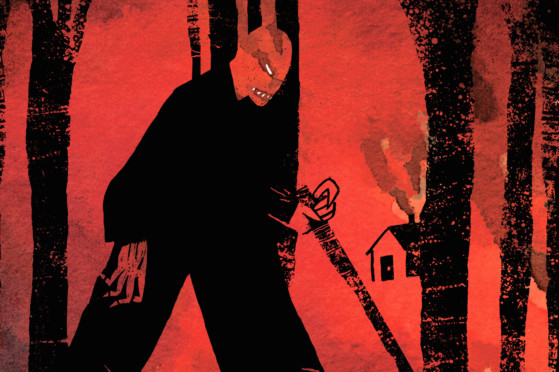
The Little Red Chairs
By Edna O’Brien, Little, Brown and Company, 320 pages, $27
Edna O’Brien’s boldly imagined and harrowing new novel, “The Little Red Chairs” — her 23rd work of fiction since “The Country Girls” (1960) — is both an exploration of those themes of Irish provincial life from the perspective of girls and women for which she has become acclaimed and a radical departure, and a work of alternate history in which the devastation of a war-torn Central European country intrudes upon the “primal innocence, lost to most places in the world”, of rural Ireland.
Here, in addition to O’Brien’s celebrated gifts of lyricism and mimetic precision, is a new, unsettling fabulist vision that suggests Kafka more than Joyce, as her portrait of the psychopath “warrior poet” Vladimir Dragan suggests Nabokov in his darker, less playful mode. Should we not recognise immediately the sinister “Dr Vladimir Dragan of Montenegro”, the author has placed this poignant passage as an epigraph:
“On the 6th of April 2012, to commemorate the 20th anniversary of the start of the siege of Sarajevo by Bosnian Serb forces, 11,541 red chairs were laid out in rows along the 800 meters of the Sarajevo high street. One empty chair for every Sarajevan killed during the 1,425 days of siege. Six hundred and forty-three small chairs represented the children killed by snipers and the heavy artillery fired from the surrounding mountains.”
Like a figure in a malevolent Irish fairy tale, a mysterious stranger appears one day seemingly out of nowhere on a bank of a tumultuous river in western Ireland, in a “freezing backwater that passes for a town and is called Cloonoila.” The stranger is himself “mesmerized” by the “manic glee” of the deafening water.
Soon, the curious, credulous inhabitants of Cloonoila fall one by one under the spell of Dragan, “Vuk”, or “Dr Vlad”, a professed poet, exile, visionary, “healer and sex therapist”. To one, he resembles a “holy man with a white beard and white hair, in a long black coat”; so priestly, one might “genuflect”. To another, he is a figure of hope: “Maybe he’ll bring a bit of romance into our lives.” Schoolchildren think he looks “a bit funny in a long black smock, with his white beard,” but consider him harmless. The village schoolteacher is suspicious, suggesting that the stranger may be a kind of Rasputin, another notorious “visionary and a healer”, but no one chooses to listen.
The young Catholic priest Father Damien is initially wary of Dr Vlad only because the outsider represents a threat to church authority: “This is a Catholic country, and chastity is our No 1 commandment.” O’Brien’s portraits of Irish priests are rarely flattering, and Father Damien is a font of clichés and empty rhetoric. “You see,” he says of the local residents, “many feel a vacuum in their lives ... marriages losing their mojo ... internet dating ... nudity ... hedonism ... the things I have heard in confession.” The presumed spiritual leader of the community is as readily taken in by Dr Vlad as the others, confiding in him that “repentance and sorrow for sin is woven into our DNA”.
In these briskly satirical exchanges O’Brien can be as wittily lethal as Muriel Spark eviscerating the foolish, but O’Brien’s sympathy is more fully engaged by those women — lonely, childless, naive — who fall more deeply under the spell of Dr Vlad. There’s Sister Bonaventure, a nun who pays for a massage from the practitioner of “holistic healing in Eastern and Western disciplines”.
More crucially, there is the “town beauty” Fidelma, married to a man much older than her and desperate to have a child, who contrives to be impregnated by the charlatan therapist, but with disastrous results both for her marriage and for herself.
Later, Fidelma will feel that the union with Dr Vlad has brought a “terrible curse” on her village — like a union with the Devil. For her audacity, which (the reader knows) is a consequence of naiveté, not lust, Fidelma will be viciously punished, as in a fairy tale in which consequences are wildly disproportionate to causes. (The scene of Fidelma’s punishment by betrayed allies of Dr Vlad is not for the fainthearted; O’Brien does not gloss over details.)
Yet, somehow, perhaps not altogether plausibly, Fidelma regains not only her health and strength but acquires a confidence she had lacked; by the novel’s end she is determined to expiate the curse of a union with the Devil by dedicating herself to the aid of desperate, displaced persons at a shelter for the homeless in London: “I could not go home until I could come home to myself.”
The most boldly imagined element of “The Little Red Chairs” is, of course, the positing of an alternate universe in which a Balkan war criminal, the object of an international search for years, turns up in a remote Irish village in the hope of establishing a new, much-diminished life as a healer-therapist. In a more conventional work of fiction, and certainly in a work of genre mystery, the exact identity of Dr Vlad would constitute the plot, and his outing would be the consequence of detection on the part of a canny protagonist among the villagers.
One can well imagine a sly Nabokovian hide-and-seek with the reader in which the man’s exact identity is never quite established and we are confronted with the possibility that Dr Vlad, like the mad narrator of “Pale Fire”, may be imagining his own lurid history.
Instead, in an audacious move in which every creative-writing admonition is tossed blithely aside, the author simply presents seven pages of densely iterated exposition in the (again, audaciously awkward) form of a dream of Dr Vlad’s in which he is chastised by an old, now-dead “blood brother” and comrade in the genocidal Serbian onslaught against Bosnian Muslim and Bosnian Croatian communities in the early 1990s: “You had been christened Young Torless because of the two terribly contrasting aspects of your character, the sane, the reasonable and the other so dark, so vengeful.”
Later, the “Beast of Bosnia” will argue in his own defence at his trial in The Hague: “If I am crazy, then patriotism itself is crazy.” (“Dragan David Dabic” was a false identity for the leader of the Serb Republic in Bosnia, Radovan Karadzic, apprehended in Serbia in 2008 after 13 years in hiding; known as the Butcher of Bosnia, Karadzic was tried in The Hague by the United Nations war crimes tribunal for war crimes including genocide. While he was in hiding, Karadzic practised “alternative healing”.)
But O’Brien is not interested in sensationalising her material, and “The Little Red Chairs” is not a novel of suspense, still less a mystery or a thriller; it is something more challenging, a work of meditation and penance. How does one come to terms with one’s own complicity in evil, even if that complicity is “innocent”? Should we trust the stranger who arrives out of nowhere in our community? Should we mistrust the stranger? When is innocence self-destructive? Given the nature of the world, when is scepticism, even cynicism, justified?
Much is made of innocence in fiction, as in life, but in O’Brien’s unsentimental imagination the innocent suffer greatly because they are not distrustful enough; and usually these innocents are girls and young women, as in O’Brien’s compelling novel “Down by the River” (1997), in which a young rural Irish girl is impregnated by her father and further humiliated by being forced to endure the public politicisation of her pregnancy by people on both sides of the abortion debate. As one of O’Brien’s female characters has said of her native Ireland: “Ours indeed was a land of shame, a land of murder and a land of strange sacrificial women.”
“The Little Red Chairs”, much farther reaching in its historic scope, much more terrifying in its portraiture of the unrepentant war criminal, yet shares with other works of O’Brien the pervading sense of guilt that is “woven into our DNA” and a determination to be free of this guilt.
Initially one of Dr Vlad’s dupes, Fidelma evolves into O’Brien’s most resourceful heroine as she throws off her very identity to live amid the homeless in London and to remake herself by painful degrees (chambermaid, dog kennel worker) into a woman strong enough to help others. In her new awareness she hears stories told by refugees in a homeless shelter: displaced persons, victims of unspeakable horrors. “It is essential to remember,” one says, “nothing must be forgotten.” She finds her community in a place that promises “We Help Victims Become Heroines”.
In her wonderful memoir, “Country Girl”, O’Brien describes her convent-girl background and her infatuation with one of her nun-teachers; it is not difficult to see how this early idealisation of a life of service has enriched her fiction. The religious vocation, in the service of others, is essentially what her courageous heroine Fidelma undertakes, amid much struggle, choosing “not to look at the prison wall of life, but to look up at the sky”.
–New York Times News Service
Joyce Carol Oates’s latest book is the novel “The Man Without a Shadow”. She is a visiting professor in the English department at the University of California, Berkeley.









